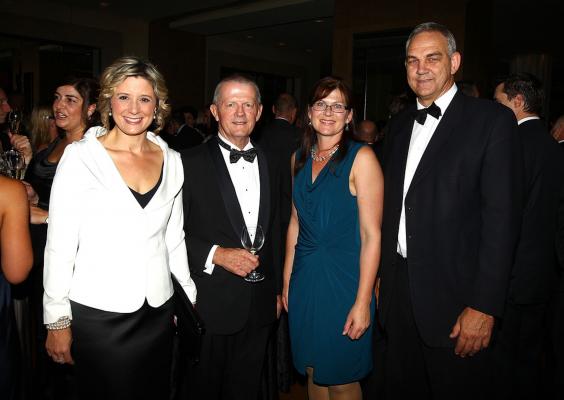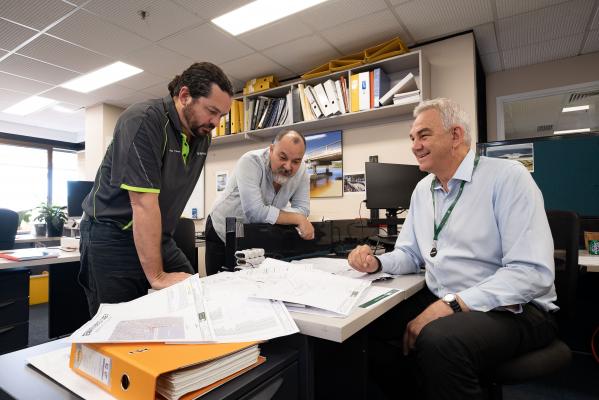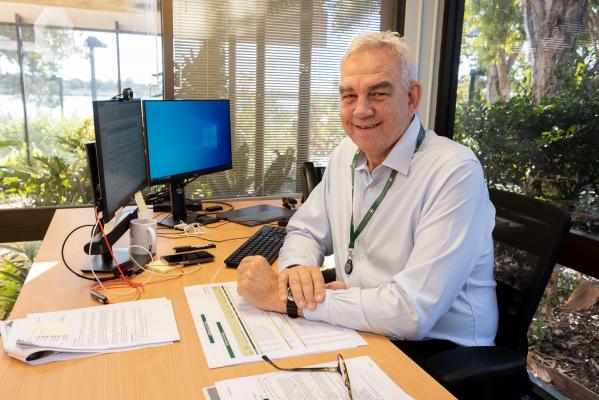
In the second part of PHIL JARRATT’s interview, Noosa Council’s new Director for Infrastructure Services, former Olympian Larry Sengstock, describes how he applied lessons learnt in sport to the boardroom during a highly successful business and administrative career.
You played your last top-level basketball in 1996. Did you get the tap on the shoulder or did you just know when to go?
You just know. I had a bulging disc in my back that made it difficult to keep in top form, and also you had to think about your career because there just wasn’t enough money in the game to retire on.
Did you already have your degrees in business administration and education at that point?
Well, you had to have a career other than basketball, so when I first went to Melbourne to play I also studied, and did my Education Degree there. Then when I was playing for the Brisbane Bullets I did my Diploma of Education, and later when I was working on the Melbourne Commonwealth Games, I did my MBA as a 40-year-old, I guess to prove that I wasn’t just a jock holding down a job for the boys. I tried to build my skills as I went, and while I was still playing for the North Melbourne Giants I became their marketing manager.
By the time I left the game I’d worked in education, coaching, marketing and media, and was looking at how to use all of them, but I took a step backwards and went into government, then put my hand up for the role of deputy CEO of the Melbourne Commonwealth Games bid, running the operational side of it – where would we play the sports, what would we need. That was a huge learning curve for me, as it is for a lot of athletes when they come out of our protective world. Fortunately, I have the mindset to address those issues. My two brothers are engineers, and I’m wired the same way, just went down a different path.
By then you were in middle age, so was it difficult at that stage for an adored elite athlete to walk into a series of bloody boardroom battles?
It is hard, and you’re battling against people who have had similar education but are a lot younger, but I was able to utilise my sporting career through the networks I’d developed in Melbourne.
Were you able to apply the life lessons you got from sport to the business world?
When I played I was big on people playing their roles, so I certainly applied that. Early on I was a scorer and the star of the team. By the time I finished I was playing the roles of defender and rebounder, getting the ball to the right people so they could score. That’s what the game teaches you, and business is no different.
Is it about parking your ego?
Absolutely, and it applies equally in sport and business, where sometimes it’s harder. [Laughs] But you can soon pick those people. You know when they can back it up.
In 2009 you became CEO of Basketball Australia and the NBL. Was that the dream job?
Not as it turned out.
That was my next question. On the rebound from having been smashed at the 2011 election, former NSW premier Kristina Keneally is appointed chair of BA and NBL. A few months later you quit suddenly after only three years in the job. What happened?
It was a tough gig. [Laughs] It was a total change in how the game was managed. The NBL had been privately owned and run, and it was struggling. In every other form of the game we were strong, but people looked at the NBL and saw problems, so the Australian Sports Commission brought BA and the NBL together and put an independent board across the top and a new CEO to run it. That was my job, to implement that structure, and politically it was difficult. I was worn out so I stepped away.
Into the quiet pastures of local government?
After the Commonwealth Games in 2006 I went into consulting and did a lot of work around the world in sports management and facilities, so after the BA job I returned to that and was doing a lot of work in the Latrobe Valley. With the closure of the Hazelwood power station (in 2016), the state government needed to inject a new stimulus into the Valley, and part of that was the building of new facilities, so that was my job – $85 million of aquatic centre, basketball stadium, synthetic soccer pitches, football stadiums, a whole range of things. The Latrobe City Council was given the money, so my group went in to work with them. While I was doing that, the role of general manager was vacated, so I took that on too.
Is director for Infrastructure Services at Noosa Council a similar role?
Very much so, although as GM at Latrobe [City] I had waste and environment as well. Here, the capital works program we’re going to deliver is huge, but it’s mainly roads and bridges, some of them $10 million ones, but a lot of it is tied up with stimulus packages and is just good, sensible long-term stuff. Working in local government has its challenges, but it’s also fun because you’re at the coalface, you see things getting done. I like that.
What are the biggest challenges facing Noosa?
I’m just five weeks into the role, but the more I get into it, the more I realise that the challenge is how to deliver change without destroying paradise. We’ve done a great job of it to date, but the pressures have been increased through Covid with more and more people coming here. We’re not on a growth spiral like our neighbours, so here the issue is containment. We have the same number of ratepayers but a huge number of people coming through and more demand placed on our services. “Different by nature” is the position we’ve taken, and we have to look after that.
The CEO retires in February. Are you going to put your hat in the ring?
Haven’t even thought about it, and I accepted the job before that was announced. I’m really comfortable with what I’m doing right now. For me to be able to bring all the skills I’ve learned back home to Noosa is very satisfying.








